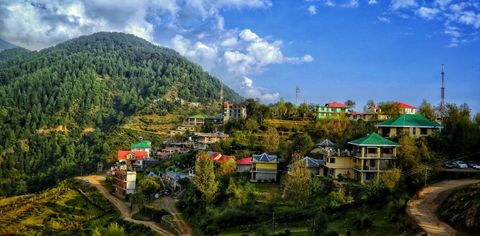
#DiscoverTheUndiscovered: There’s a lot more to Himachal Pradesh’s Dharamshala than the famous Kangra tea and Tibetan settlements. Take inspiration from this guide and explore the road less travelled, instead. By Shalini Passi

Hidden Gems Of Dharamshala
1. Masrur Temple Complex

Picture an entire sandstone temple chiselled out of a single hill! Located near the Baes river of Himachal Pradesh’s Kangra Valley, the Masrur temples is an unexplored gem. The temple complex is one of India’s few monolithic complexes. The complex is suspected to have been built between the end of the 7th Century and the beginning of the 8th. However, due to earthquakes, the statues and sculptures here have weathered and disintegrated to a great extent. The 15 temples are meticulously carved in Nagara-Shikhara style of architecture. The complex faces a sacred water tank (Kund), signifying its ritual and social relevance.

Locals believe that the temple was constructed by the Pandavas during their exile. Moreover, idols of Ramayanas Rama, Lakshamana, and Sita are placed inside the main sanctum. However, the temple is believed to have originally been constructed as a Shiva temple, as is evident from the Shiva figurine placed on the main door’s lintel and other parts of the structure. In recent history, the temple was converted to a Vaishnava temple and thus is often called Thakurdvara, a term commonly used for Vaishnavite temples.
2. St John in the Wilderness Church

The British Raj in India led to the construction of several European-style churches in the late 19th and early 20th century. McLeod Ganj’s St John in the Wilderness Church, built in 1852, is one such Anglican church. Dedicated to John the Baptist, it is built in the style of neo-Gothic architecture. Since it is situated at an elevation of 1,750 metres from sea level amid dense vegetation of Cedrus Deodara, it creates an isolated natural-scape environment offering a picturesque view of the town. When I visited this church, it created a sense of coexistence, reminding me how tiny humans are amongst the gigantic forest. A must-visit when in Dharamshala.
3. Bhagsunag Temple

Situated about two kilometres from McLeod Ganj, Bhagsunag temple is an ancient temple dedicated to the Nag Devta (Snake God) and Lord Shiva. According to legend, Nag Devta got into a battle with King Bhagsu 5,000 years ago as the latter stole water from the sacred Nag Dal Lake. Nag Devta, however, forgave the king despite winning against the royalty. Thus, the site was consecrated as Bhagsunag.
I was astonished by the serene vibes created by the temple bells when I made my way to the Sanctum sanctorum. The holy pond here, complete with a natural spring, added to the tranquillity of the place. It was inspiring to watch devotees take holy dips, despite it being so cold.
4. Namgyal Monastery

McLeod Ganj’s Namgyal Monastery is considered the largest Tibetan temple outside of Tibet. Moreover, as it is also the 14th Dalai Lama’s personal monastery, Namgyal Monastery is also referred to as Dalai Lama’s Temple.
When I visited this place, the serene ambience—paired with reverberating chants—calmed my mind. I learned that close to 200 monks work towards protecting the practices, skills, and traditions of the monastery at the Namgyal Tantric College here. The infectious and powerful energy surrounding the monastery brought a wide smile to my face.
5. Kangra Art Museum

Kangra Art Museum is not only famous for the wealth of knowledge it has to offer, but also for its pleasant location. It was a rejoicing experience to see miniature paintings at the museum. Traditionally, Kangra miniature paintings are made on handmade paper using mineral and vegetable colours. These artworks traditionally consist of flowering plants and creepers, leafless trees, rivulets, and brooks poetically blended in colour and form.
The museum, however, transcends miniature paintings. It also encompasses artefacts dating back to the fifth century such as coins, jewellery, and manuscripts. Local artists display their work here, some of which can be bought as well. The museum also has a section that houses works by contemporary artists, sculptors, and photographers. Another must-visit spot in Dharamshala!
Related: What Makes Dharamshala A Hot Favourite Among Indian Travellers? Find Out Here










